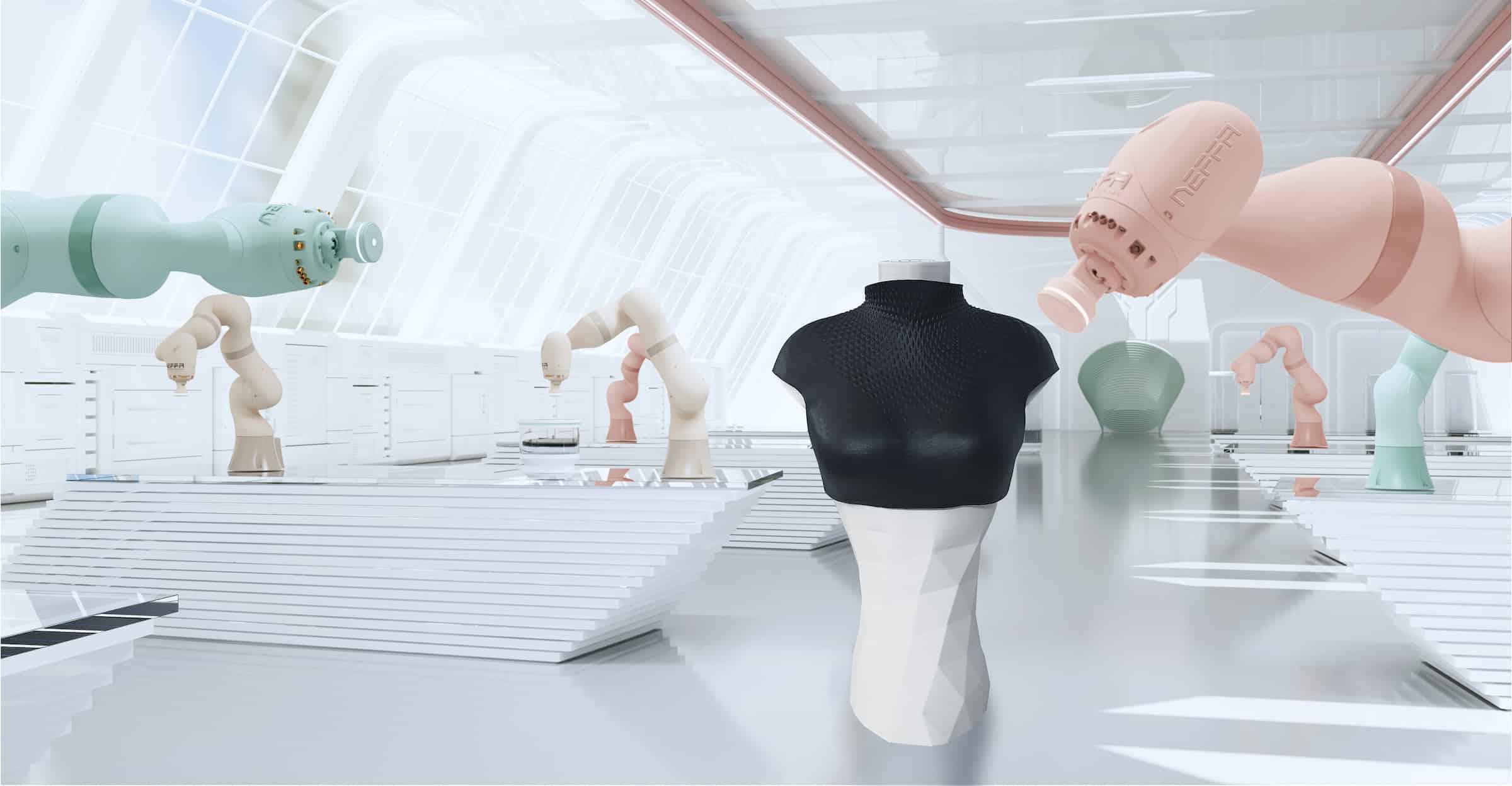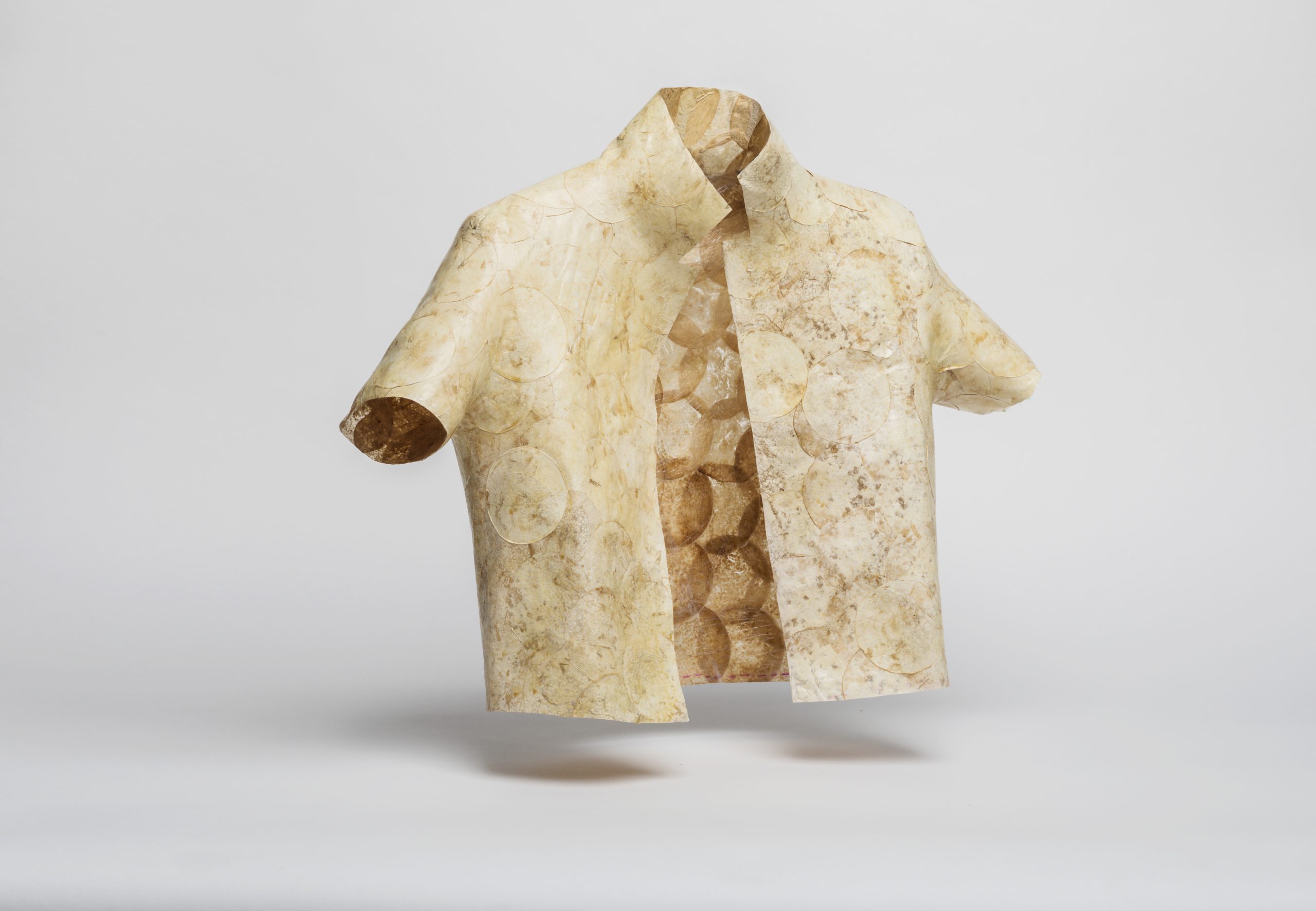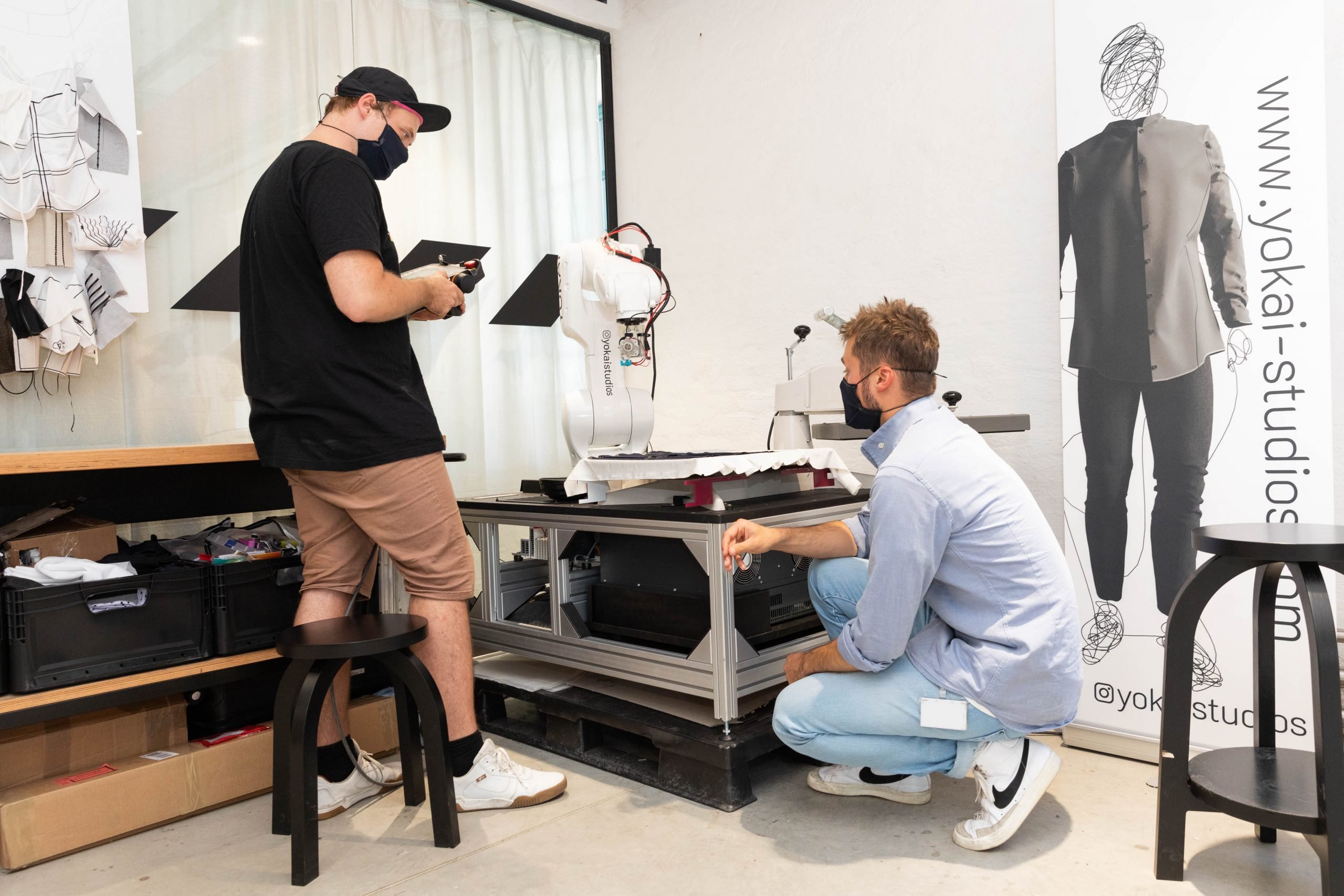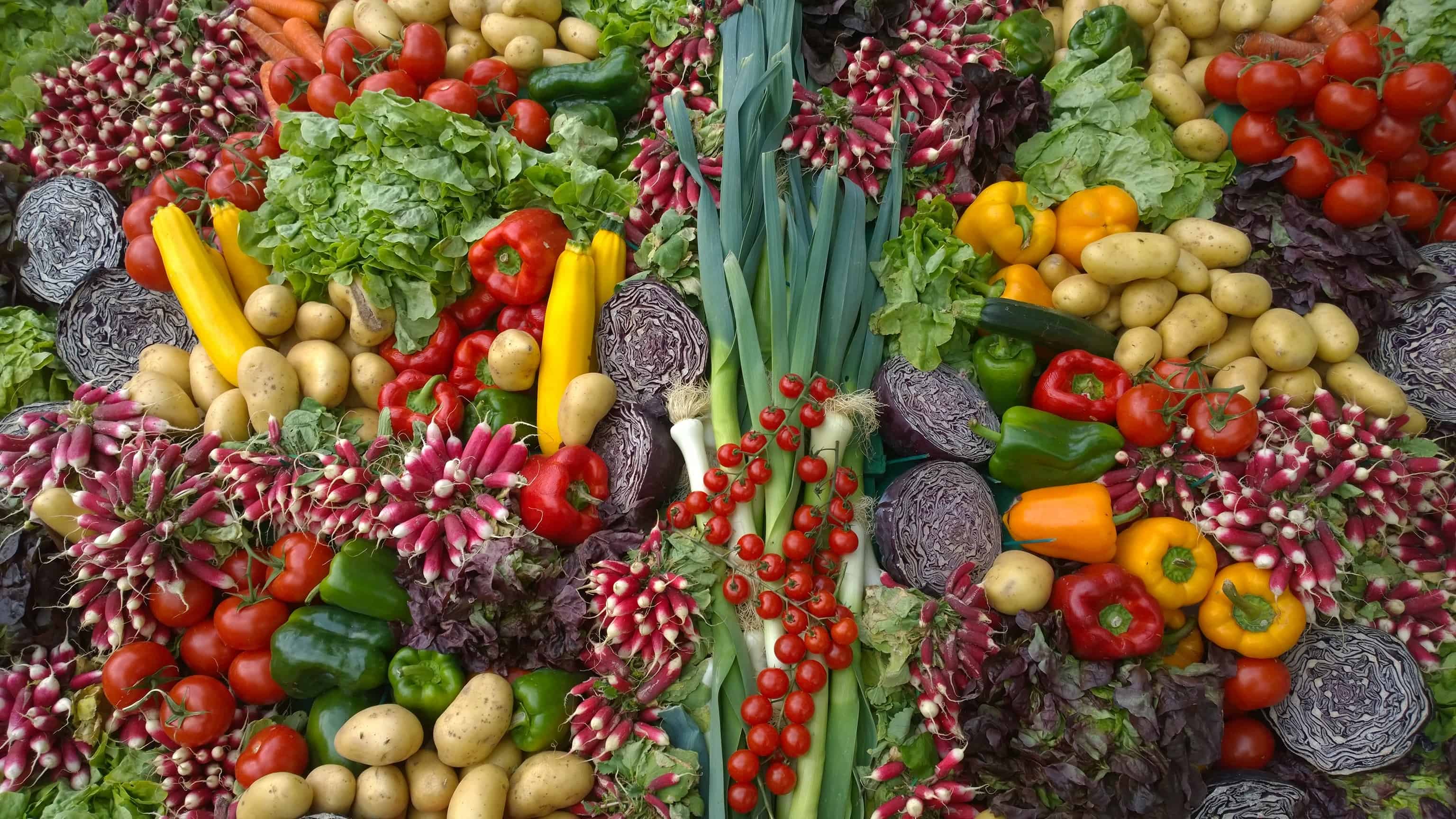
The traditional production processes in the fashion industry are knitting and sewing. Knitting is a relatively sustainable process, as the individual cut pieces can be made right away in the intended shape, creating no waste. But the majority of garments are sewn, which is enormously resource-intensive. That’s because cutting from yardage creates a lot of fabric waste, and sewing the individual cut pieces together is demanding and time-consuming.
The U.S. defense industry already uses sewing robots, but the more flexible the material, the more robots lack the dexterity needed to join cut pieces together.
Unsolved production problems
Outsourcing production to low-wage countries has not solved the problem, just shifted it, and created additional problems. That’s because exploitative working conditions prevail in the workshops, most of which are located in Asia, with long working hours and low wages. “We can solve these problems and bring production back to Europe,” explains Aniela Hoitink, co-founder and CEO of the Dutch start-up NEFFA. Together with technician Nicoline van Enter, she has developed a holistic system that – along with sewing and knitting – is set to become the next big manufacturing process in the fashion industry.
Video: Shaping instead of sewing: startup NEFFA develops an alternative to the costly sewing process in the fashion industry
“The fashion industry suffers from a long supply chain and a cumbersome procedure in production. Each product is individual and requires a new production line. This means that the necessary machines must be arranged in the best possible sequence to ensure accurate and fast processes, which is very time-consuming and slows down the productivity of workshops,” explains Aniela.
Back to local production
The NEFFA system developed in her start-up makes this conversion obsolete and brings the prospect of affordable production in Europe. That’s because all work steps are carried out by a robot. This could shorten product development enormously and reduce the burden on the environment. Currently, product samples are transported several times from Europe to Asia and back to ensure careful processing. This is a process that drags on for months and pollutes the environment with CO2 emissions from transportation. “We are on site and much more flexible in production, eliminating long transportation routes. After a successful test run, reorders can be placed quickly,” explains Aniela.
Holistic solution
The holistic production system that she and technician Nicoline van Enter have developed is based on a material made from mushroom roots that can be processed in three dimensions. This eliminates the sewing process and allows the entire production to be carried out by a robot. NEFFA does not build a factory itself, but acts as a knowledge broker and collaborates with companies that bring crucial competencies to the supply chain, from material to color pigments and production to coating. There are only a few production steps between material production and coating – and it all happens over a period of just seven days!

The founders have already provided proof of concept and are currently collaborating with the German company Desma, one of the largest manufacturers of machines for shoe production. According to Aniela, there are two possible production strategies to date. The goal of the collaboration is to identify the more suitable one. At the same time, a pilot collection will be created. Together with partners from the fashion industry, prototypes will be developed that meet individual specifications in terms of tear, tensile strength, and wear.
Production in 3D
The production method currently being tested was preceded by the development of Mycotex, a material produced from mushroom roots. It is grown in large fermenters and is ready for harvesting after five to seven days. After processing, the raw material is paste-like, dyed with pigments, and can be made into a garment.
Essential production tools are a robot arm and a predefined mold. The robot applies the soft mass to the mold, and the drying process produces a firm but flexible textile in 3D form. Once the product is removed from the mold, it only needs to be coated and sent for final processing.
Flexible production
A major advantage of the production method is its flexibility. The fully automated process can be used for clothing as well as accessories and footwear and does not require high temperatures or pressure. As a result, the mold can be bubble-like and take on different shapes. The robot recognizes the shape and works based on the information it receives from the mold. So the same robot used to make a purse can also make the top of a shoe or a garment.
To prove the viability of their start-up to the fashion industry, the founders initially want to produce high volumes. But their long-term goal is to produce on demand from consumers, based on their body measurements. They could order the desired model online, upload their body scans, and receive a tailor-made garment after just a short time.
Fleece-like material
The material is soft and looks like something between leather and plastic. The material surface can be smooth or textured. Aniela presents a purse whose surface has large protuberances in the shape of a cone – a novel aesthetic that has never been seen before – and was only made possible by the manufacturing method. A more conventional texturing possibility would be a structure similar to crocodile leather.
According to Aniela, Mycotex can be used for many materials commonly used in the fashion industry because it can be varied in thickness, flexibility, and texture. Currently, the company is experiencing strong demand from the leather processing industry. Says Aniela, “There are a number of companies here that are already working with Myzelium. For them, our production method is the next step.”
Compostable
Mycotex has the advantage that it can be produced in an environmentally friendly way from a renewable raw material. At the end of its life cycle, a garment can be easily composted by the user at home. Aniela and Nicoline want to work not just with mycelium, but also push the development of other materials such as collagen- or algae-based raw materials, where they see great potential. The production process they have developed is suitable in principle for all biotechnologically produced materials.








